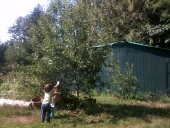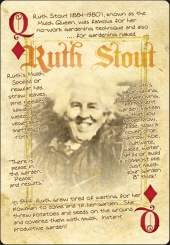








 . By the end of the day your going to be praying for more mice to kill!
. By the end of the day your going to be praying for more mice to kill!
Those who hammer their swords into plows will plow for those who don't!




1. my projects
 1
1




Idle dreamer













"Instead of Pay It Forward I prefer Plant It Forward" ~Howard Story / "God has cared for these trees, saved them from drought, disease, avalanches, and a thousand tempests and floods. But he cannot save them from fools." ~John Muir
My Project Page




The ultimate goal of farming is not the growing of crops, but the cultivation and perfection of human beings. - Masanobu Fukuoka
 1
1












For unlimited return on all your investments - Make your deposits at 'The Entangled Bank' !








AKA Wilde Hilde
S.Oregon High Mountain Valley 8b
"Ensnar'd in flowers, I fall in the grass."-Marvell





|
a tiny voice in my head can't shut up about this tiny ad:
Freaky Cheap Heat - 2 hour movie - HD streaming
https://permies.com/wiki/238453/Freaky-Cheap-Heat-hour-movie
|



